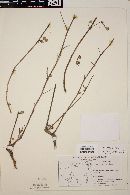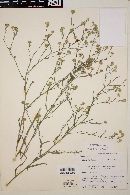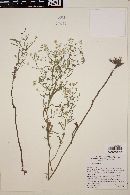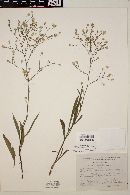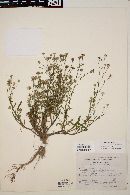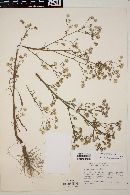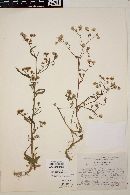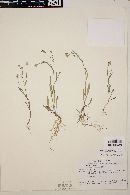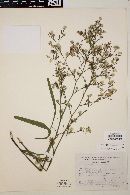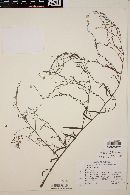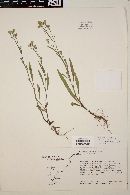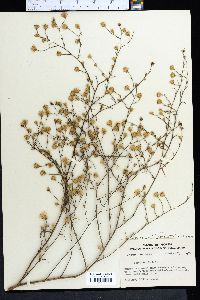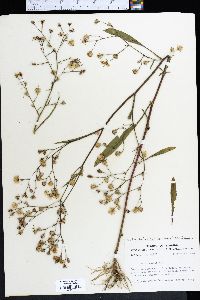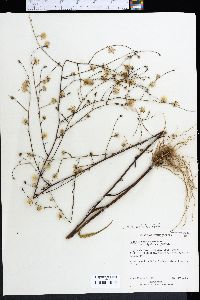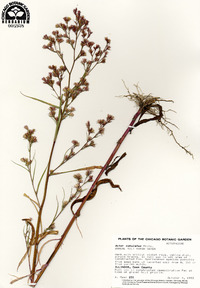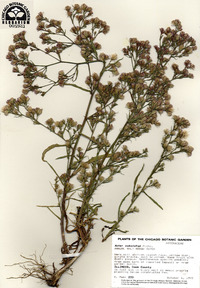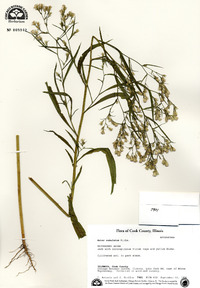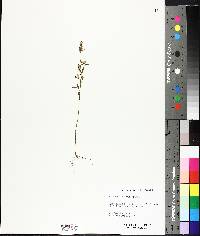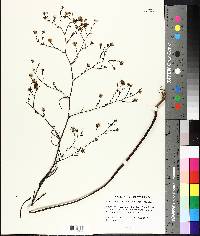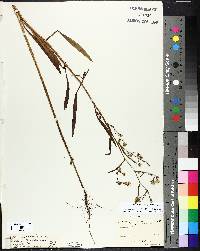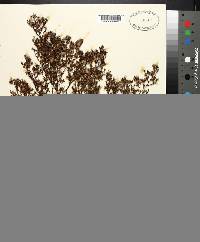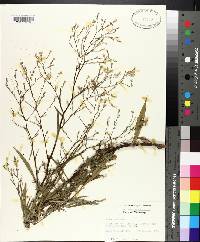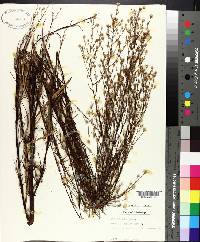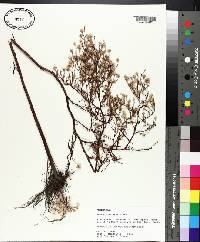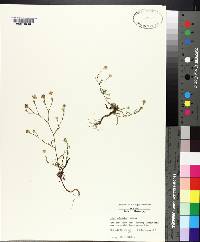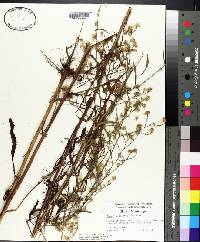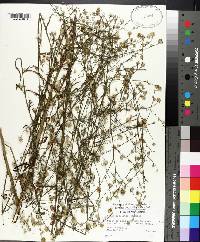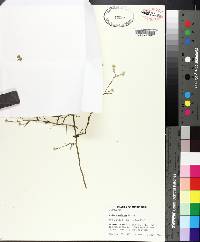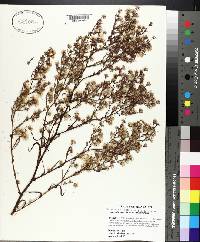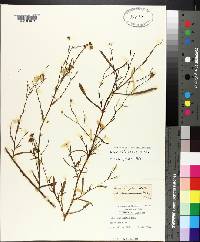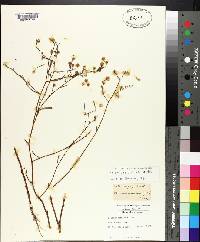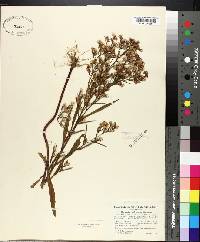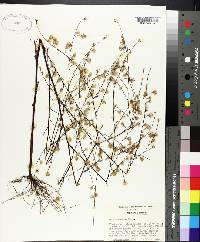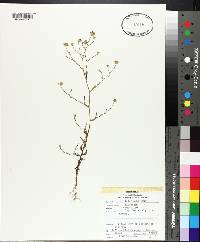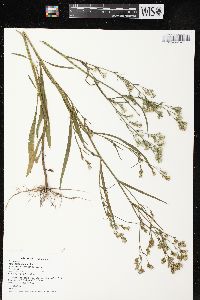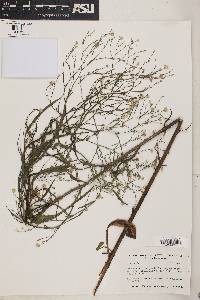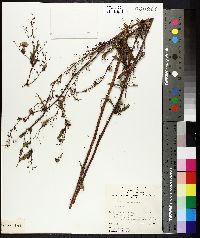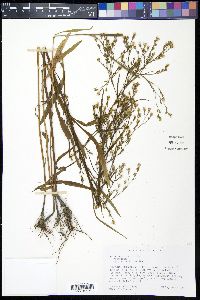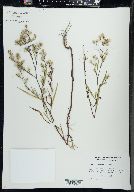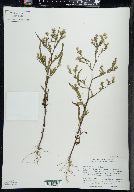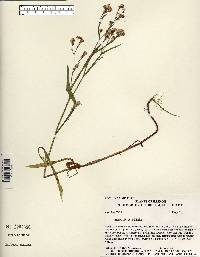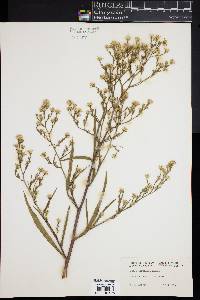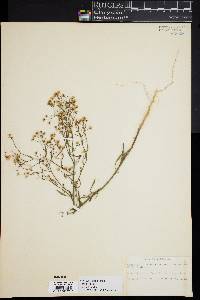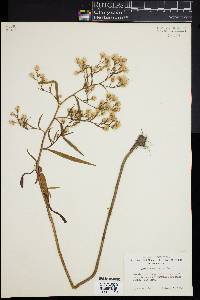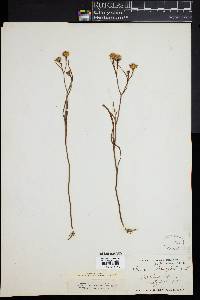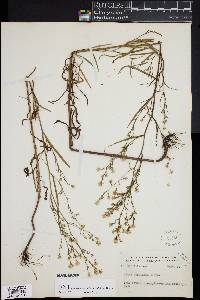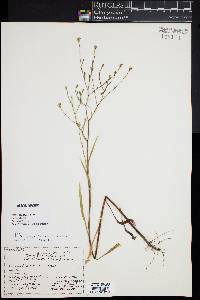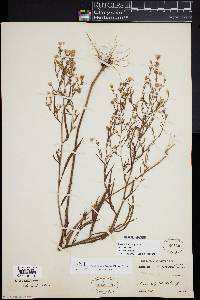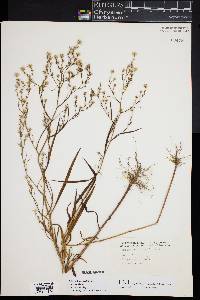Symphyotrichum subulatum
|
|
|
|
Family: Asteraceae
Seaside American-Aster, more... (es: escobillo)
[Aster divaricatus var. sandwicensis A. Gray, moreAster sandwicensis (A. Gray) Hieron., Aster subulatus Michx., Aster subulatus var. australis (A. Gray) Shinners, Aster subulatus var. euroauster Fernald & Griscom, Aster subulatus var. obtusifolius Fernald, Aster subulatus var. sandwicensis (A. Gray) A.G. Jones] |
Annuals, (10-)30-150 cm; tap-rooted. Stems 1, erect (often with purple or purplish brown areas), glabrous or glabrate, sometimes strigillose in leaf axils. Leaves thin (green to dark green), margins often strigilloso-ciliolate, faces glabrous; basal withering by flowering, long-petiolate (petiole bases sheathing), sparsely ciliate, blades ovate to oblanceolate, 10-90 × 6-14 mm, bases attenuate to cuneate, rounded, margins entire or serrulate or crenulate, apices rounded, obtuse, or acute; proximal cauline withering by flowering, petiolate, subpetiolate, or sessile, blades narrowly lanceolate or subulate, 20-100(-200) × 1.5-10(-20) mm, bases attenuate, margins subentire, entire, or serrulate, apices acute to acuminate; distal sessile, blades narrowly lanceolate to subulate, 5-113 × 0.5-5.5 mm, apices acuminate. Heads (10-) 30-100(-150), in open, diffuse, paniculiform arrays. Peduncles (0.2-)0.5-4 cm, bracts 4-8(-17). Involucres cylindric to turbinate, 5-7(-8.2) mm. Phyllaries in 3-5 series, broadly or narrowly lanceolate to subulate, unequal, bases indurate, margins hyaline, often purple-tinged, entire, green zones lanceolate (usually narrow, sometimes broad and covering most of distal portion), apices acute, faces glabrous. Ray florets 16-30(-54) in 1-3 series; corollas white, pink, or lavender, laminae 1.3-7 × 0.2-1.3 mm. Disc florets 4-10(-13); corollas yel-low, sometimes tinged with purple, 3.4-5.2 mm, throats narrowly funnelform, lobes ± spreading to erect, nar-rowly triangular, 0.3-0.7 mm, glabrous. Cypselae light brown to purple, narrowly obovoid to fusiform, some-times ± compressed, (1.2-)1.5-2.7(-3) mm, 5-nerved, faces sparsely strigillose; pappi white, (3-)3.5-5.5 mm. Five varieties of Symphyotrichum subulatum are recognized for North America based on differences in chromosome number, ray lamina color and size, array shapes, number of series of ray florets, number of disc and ray florets, and other, more cryptic characters (S. D. Sundberg 2004). These varieties were treated as species by G. L. Nesom (1994b, 2005d). Variety ligulatum is apparently an obligate outcrosser and is the least variable variety (Sundberg). Other varieties are self-compatible, which could facilitate the fixation of mutations in populations. The five varieties are nearly entirely allopatric, and intermediates between pairs of varieties are not uncommon where they approach one another. Populations that are intermediate in ray lamina size between vars. ligulatum and parviflorum are widespread in southern Texas, New Mexico, Arizona, and northern Mexico. Intermediates between vars. elongatum and parviflorum and between vars. elongatum and subulatum occur in Florida. Despite these observations, hybridization experiments and chromosome number differences suggest that the varieties are mostly reproductively isolated (S. D. Sundberg 1986, 2004). In older floras the name Aster exilis Elliott has been applied to Symphyotrichum subulatum vars. ligulatum and parviflorum. The status of this name is uncertain; the type specimen has been lost and the description of the plant is inadequate for determining the taxon to which the name should be applied (G. L. Nesom 1994b; S. D. Sundberg 2004).
FNA 2006, McDougall 1973 Duration: Annual Nativity: Native Lifeform: Forb/Herb General: Herbaceous annuals to biennials, to 150 cm tall, stems usually solitary, glabrous, sometimes with hairs in leaf axils, branches spreading, at least above the middle, plants with taproots. Leaves: Alternate, thin, green to dark green and ciliate margins, basal leaves ovate to oblanceolate, to 10 cm long and 1.5 cm wide, long-petiolate with sheathing bases, faces sparsely ciliate, margins entire to serrulate, cauline leaves petiolate, subpetiolate, or sessile, narrowly lanceolate or awl-shaped, the margins subentire, entire, or serrulate, not much reduced. Flowers: Heads radiate, rays white, pink, or lavender, 16-30 in 1-3 series, laminae 1-7 mm long, disk flowers yellow, 4-10, the lobes spreading to erect, nar-rowly triangular, glabrous, involucres cylindric, graduated, 5-8 mm high, phyllaries in 3-5 series, graduated, lanceolate to subulate, unequal, margins hyaline, often purple-tinged, entire, apices acute, faces glabrous, heads 30-100 or more, borne in open, diffuse, paniculiform arrays. Fruits: Achenes light brown to purple, narrowly obovoid, compressed, 5-nerved, to 3 mm long, the faces sparsely stiff hairs. Pappus of numerous, white, sub-equal capillary bristles, 3.5-5.5 mm long. Ecology: Found in wetland areas, from - ft (-m); flowering Distribution: Ontario east to New Brunswick, south to Florida, and west to Texas. Ethnobotany: Unknown, but other species in the genera have uses. Etymology: Symphyotrichum comes from Greek symphysis for borne together and trichnos for hair, while subulatum means awl-shaped. Synonyms: Aster ensifer, Aster subulatus, Aster subulatus var. euroauster, Aster subulatus var. obtusifolius, Mesoligus subulatus Editor: LCrumbacher 2011 Glabrous, somewhat fleshy annual 1-10 dm from a short taproot; lvs linear, entire or nearly so, to 20 נ1 cm, entire; heads remotely solitary to usually several or many in an open infl; invol rather narrow, 5-8 mm, its usually well imbricate bracts acuminate, often somewhat greenish, but scarcely herbaceous, frequently purplish toward the margins and tips, all except sometimes the outer with scarious or hyaline margins; rays inconspicuous, bluish, more numerous than the 5-15 disk-fls, becoming circinately rolled outwards, longer than the style, but scarcely or not at all exceeding the copious fine white pappus; 2n=10, 20. Coastal, mostly saline marshes; N.B. and se. Me. and N.H. to trop. Amer., and rarely and irregularly inland to e. N.Y. and s. Mich.; also in a nonmaritime, often weedy var. in the Ozark reg., n. to Nebr. Most of our plants are var. subulatus, as here described; plants of N.B. have blunter lvs, and a less imbricate, slightly more herbaceous invol, and have been distinguished as var. obtusifolius Fernald. Gleason, Henry A. & Cronquist, Arthur J. 1991. Manual of vascular plants of northeastern United States and adjacent Canada. lxxv + 910 pp. ©The New York Botanical Garden. All rights reserved. Used by permission. From Flora of Indiana (1940) by Charles C. Deam Indiana Coefficient of Conservatism: C = Wetland Indicator Status: |
|
|
|


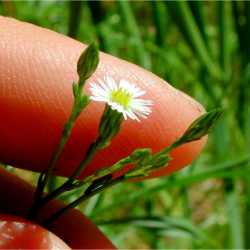
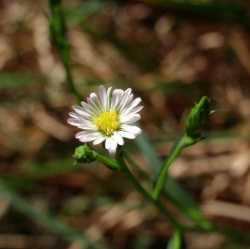

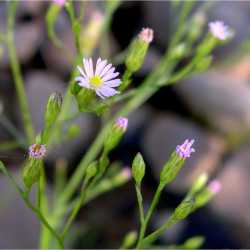
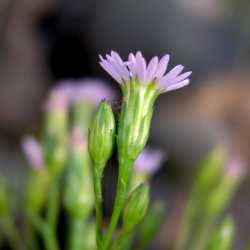
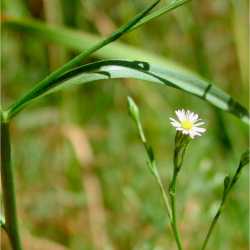
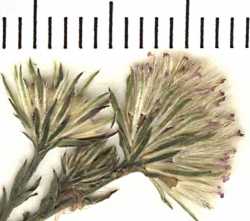
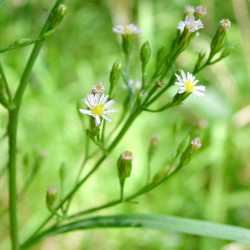
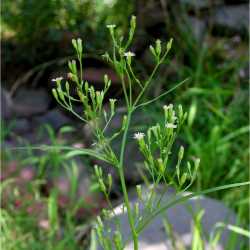
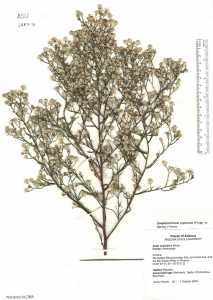
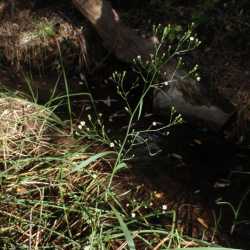
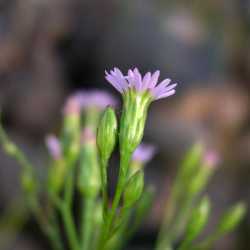
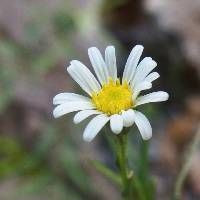
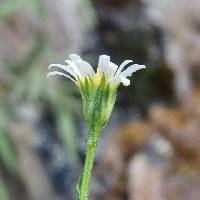
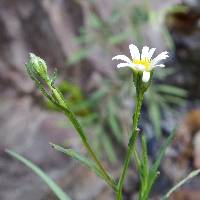
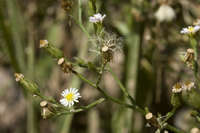
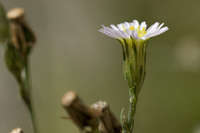
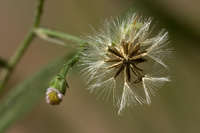
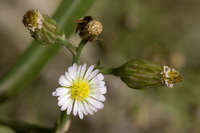

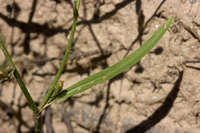
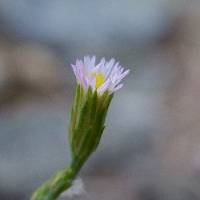
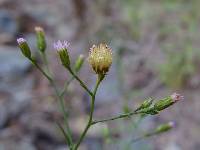
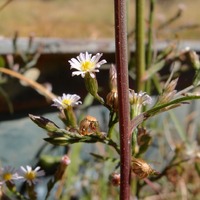
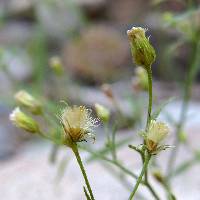
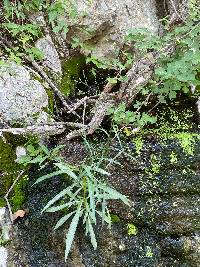
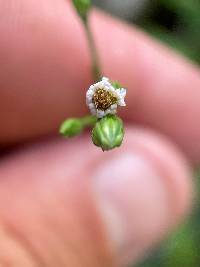
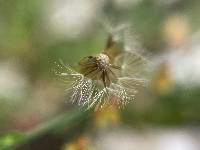
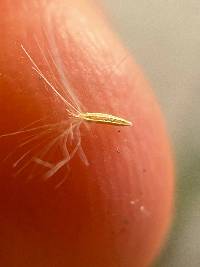
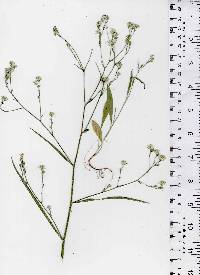
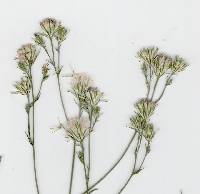
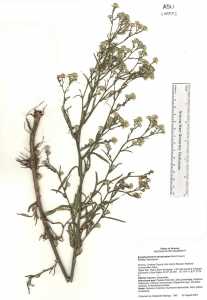
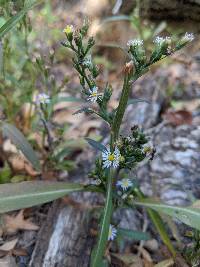
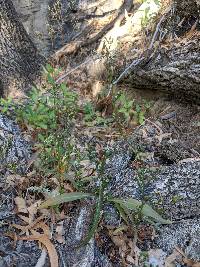
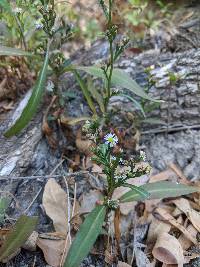
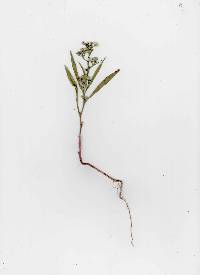
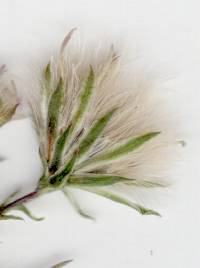
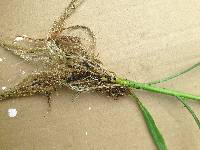
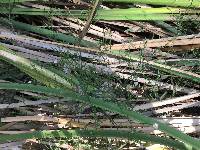
_tn.jpg)

